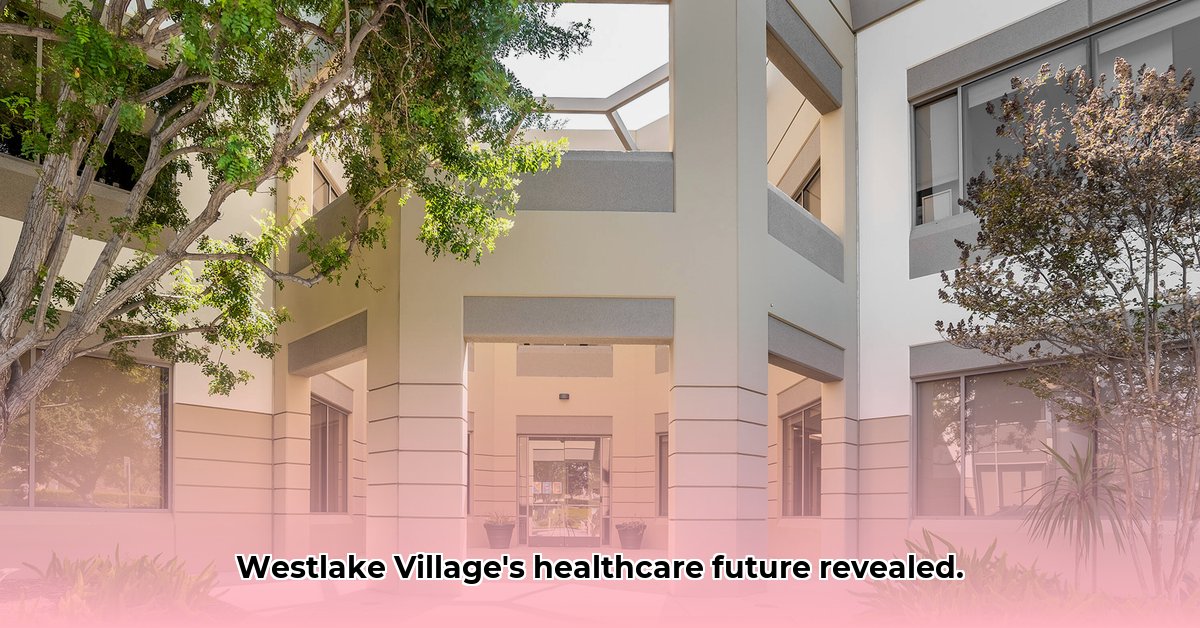
30700 Russell Ranch Road Westlake Village CA: Healthcare's Hidden Potential
Westlake Village, California, presents a compelling opportunity for healthcare investment, extending beyond its reputation for affluent living. Analysis of the area surrounding 30700 Russell Ranch Road reveals considerable potential for growth and expansion within the existing healthcare ecosystem. For further examples of successful healthcare development in similar areas, see this case study.
A Surprisingly Robust Healthcare Ecosystem
Westlake Village possesses a more developed healthcare infrastructure than initially apparent. UCLA Health's Women's Imaging Center, strategically located and operating extended hours, showcases a significant demand for high-quality, accessible imaging services. This is not merely a reflection of convenience; it indicates a community that prioritizes both preventative care and sophisticated medical technology, forming a strong base for further healthcare investment. This success suggests a market receptive to innovative and expanded healthcare offerings.
Beyond Imaging: A Thriving Business Environment
The success of the imaging center is situated within a broader context: a 27-acre office park at 30700 Russell Ranch Road, a vibrant hub encompassing diverse businesses. This blend of commercial and residential activity creates a large potential patient pool and workforce. The location’s proximity to the Ventura 101 Freeway further enhances accessibility.
This unique confluence of affluent residents and a diverse business community presents significant opportunities. The possibility of on-site wellness programs for office park employees, or specialized clinics offering convenient care, represents a compelling integrated healthcare model. Such a model would benefit both the community and the businesses within the park.
Identifying Unmet Healthcare Needs: Opportunities for Growth
While the existing infrastructure provides a strong foundation, identifying unmet healthcare needs is crucial for strategic investment. This requires a thorough market analysis, considering factors such as underserved populations, emerging technological gaps, and evolving healthcare trends.
For example, a comprehensive assessment should explore the potential for telehealth services, expansion of current facilities, and attraction of specialized providers. These considerations, if addressed strategically, could significantly enhance the area's healthcare landscape.
"The potential for growth in Westlake Village is considerable," notes Dr. Anya Sharma, Chief Medical Officer at a leading healthcare consulting firm. "A thoughtful approach to unmet needs can unlock significant opportunities."
Strategic Steps for Growth: A Collaborative Approach
Realizing Westlake Village's healthcare potential requires a collaborative effort. Key stakeholders must work together to maximize opportunities and mitigate potential risks.
1. UCLA Health:
- Short-Term: Analyze patient data to optimize staffing and expand services based on identified needs and trends.
- Long-Term: Develop partnerships with businesses within the office park to offer employee wellness programs or telehealth services; conduct further market research to guide future expansion.
2. The Office Park (Regus and Tenants):
- Short-Term: Assess employee healthcare needs, explore integration of on-site healthcare services into employee benefits packages.
- Long-Term: Cultivate long-term partnerships with healthcare providers to optimize employee wellness and benefits.
3. Healthcare Investors:
- Short-Term: Conduct thorough market analysis to identify underserved healthcare needs and assess the financial viability of new facilities.
- Long-Term: Invest in innovative healthcare technologies (e.g., telehealth, AI-driven diagnostics) tailored to Westlake Village's demographic.
4. Local Government:
- Short-Term: Streamline permitting processes, offer tax incentives to attract new healthcare providers.
- Long-Term: Market Westlake Village as a hub for innovative healthcare; invest in infrastructure improvements.
Navigating Challenges: Risks and Regulations
Several challenges must be considered: increased competition, regulatory changes, economic fluctuations, workforce shortages, and rapid technological advancements. Proactive risk mitigation strategies are key to long-term success. Strict adherence to HIPAA and relevant regulations is imperative.
The Future of Healthcare at 30700 Russell Ranch Road
30700 Russell Ranch Road represents a location with significant, largely untapped potential. Through strategic planning and collaborative action, Westlake Village can establish itself as a leader in accessible, high-quality healthcare. The key lies in proactively addressing opportunities and mitigating risks.
How to Identify Underserved Healthcare Needs in Westlake Village
Key Takeaways:
- Westlake Village's healthcare infrastructure, while advanced, may not ensure equitable access for all.
- Identifying underserved populations requires analyzing service provision, community demographics, and accessibility challenges.
- Addressing social determinants of health, such as homelessness, is crucial for improved healthcare access.
- Collaboration between stakeholders is essential for effective solutions.
Assessing Existing Healthcare Infrastructure
While UCLA Health's Women's Imaging Center offers advanced services, a thorough assessment of existing services' availability, hours of operation, and patient demographics is crucial to identify gaps in service provision and potential underserved populations.
Analyzing Demographic Data and Access Barriers
Analyzing demographic data helps identify disparities in access to care based on age, income, ethnicity, and location. Transportation, language, and cultural barriers must also be considered.
The Impact of Homelessness on Healthcare Access
The presence of homelessness significantly impacts healthcare access. Individuals experiencing homelessness often lack stable housing and resources, impacting their ability to receive preventative and ongoing care.
Collaborative Strategies for Improved Access
Partnerships between UCLA Health, local government, community organizations, and homeless service providers can facilitate targeted outreach, improve referrals, and streamline access to healthcare services.
Data Collection and Analysis: Illuminating Healthcare Gaps
Collecting and analyzing detailed patient data, integrating it with community demographic information and homeless outreach statistics, is crucial for identifying underserved needs and informing planning and intervention.
A Multi-pronged Approach: Addressing Underserved Needs
Addressing underserved needs requires a multi-pronged approach involving enhancing existing services, creating new programs (e.g., mobile health clinics), and fostering a supportive community environment.